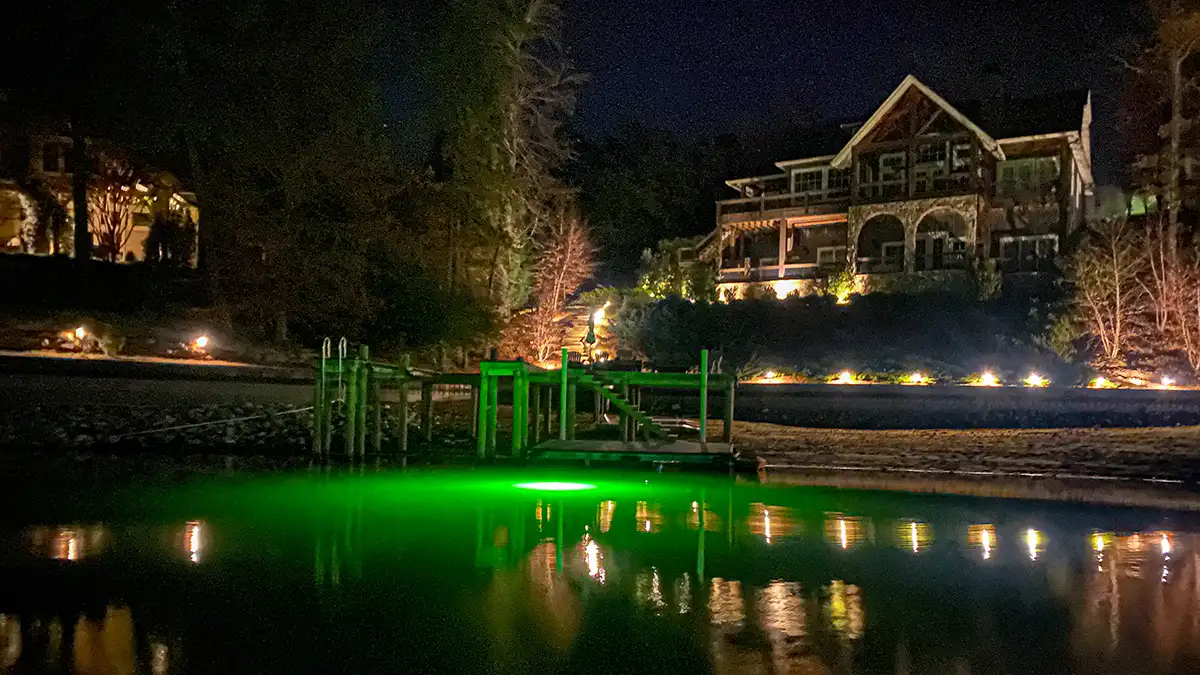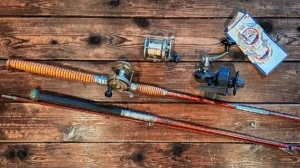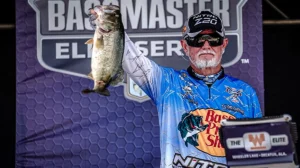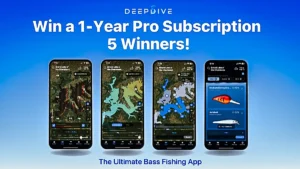The summer to fall transition can be a challenging time of year to fish. Between lakes beginning their fall turnovers and the start of college football, many people start to throw in the towel and shift their focus elsewhere. While fishing can be tough, there are a couple bites that really start to heat up as fish transition into their fall tendencies. One of my favorite things to do this time of year is night fish.
Night fishing, especially around green lights, can be a blast during the summer to fall transition. As fish begin to move shallow with colder nights, these lights really start to heat up. This can be a great way to catch a ton of quality sized fish once you understand why fish like a green light, how to find them, and how to fish them.
WHAT ARE GREEN LIGHTS?
Green lights are submerged lights often found around, docks, marinas or big yachts that are sunk for the purpose of attracting fish. These lights can be found on nearly any body of water across the country. They are common in both fresh and saltwater, and attract fish of all kinds. There are many different kinds of lights that attract fish such as overhanging lights or spotlights, but not often are they submerged under the water. By submerging a light it allows the fish to locate it from a greater distance, often leading to a larger congregation of fish.
WHY FISH LIKE GREEN LIGHTS
There are a few reasons bass are attracted to these lights. The first being that it congregates baitfish. Green light has a high lumen output of 130 per LED with a 520 nm wavelength. Many different types of baitfish and insects have these wavelengths in their color vision spectrum alongside green light receptors around 530 um. This specific colored light causes baitfish with these light receptors to be attracted to this type of light, ultimately causing the bass to follow close behind.
The longer a light is left in one location the more bass will discover the light, causing them to repeatedly come back to feed. This is one of the most important attributes when looking for a productive green light. If the light has been there for a while and is on every night, there’s a good chance there’s quality bass using this light to feed.
HOW TO FIND GREEN LIGHTS
Locating these green lights can often be the most challenging part of night fishing. The actual lights themselves are typically fairly small, and almost impossible to spot during the daytime. This means you have to search the lake at night to find them. My favorite way to locate these lights is by going to populated coves with lots of docks. I will then slowly cruise around these pockets until I notice a light.
While these lights do stick out at night, they can sometimes be difficult to see depending on where they are placed. If there is a large congregation of docs that looks like it may have a light, it is important to further investigate. Many of these productive lights are off the beaten path where most anglers won’t find them, so it is important to check closely when looking for these night time sweet spots.
HOW TO FISH GREEN LIGHTS
You can catch fish out of green lights on a plethora of different baits. However there is a general three-step approach I like to employ when fishing these lights. I like to use a variation of three different baits when fishing a light. These baits include a big swimbait or glide bait, a fluke or jerkbait, and a finesse style worm.
When you first approach a light it is important to keep your distance in order to not disturb the light. I will then look for any fish that I can visibly see cruising around the light. My first cast is almost always with a big swimbait or glide bait. I will cast this bait over the fish and slowly work it through the heart of the light. This will call out some of the biggest fish in the area and is often your best bet at getting a big bite on a green light.
After making a few casts with a glide bait, I will then switch over to a fluke or jerkbait depending on the amount of cover. This bait is great for generating reaction strikes from fish who want to chase bait, but aren’t quite big enough to eat the glide bait. This is often what I catch the majority of fish on when fishing these style lights.
Once fish start to shy away from reaction baits, you can then switch over to a finesse style worm. I like to throw this worm around the outside edges of the lights allowing it to soak in front of the fishes face for an extended amount of time. This is a great way to generate a few extra bites after you have caught some fish out of a light.
USING LIVE SONAR
Live sonar can be another useful tool when fishing these lights. This is especially true around deeper green lights. Live sonar gives you the ability to see exactly how many fish are inhabiting each light. This can be crucial for deciding how long you should fish each location. It also allows you to cast your bait at specific fish making you much more efficient. There is often a “sweet spot” cast on the majority of green lights. Live sonar can show you exactly where this is by highlighting where the majority of fish are sitting on a light. This technology can greatly increase your efficiency and success rate when fishing this type of cover.
RUNNNING A PATTERN
Running a pattern is another great way to catch a good limit of fish when fishing these lights. There are a number of different things you can pattern when fishing this type of cover, however my favorites are depth and bait preference. I like to start by figuring out what depth these bass prefer on a light. I will then go hit all the lights in this preferred depth range first before transitioning over to shallower or deeper lights. This can be a great way to quickly get around a ton of biting fish.
I also like to pattern the bait when fishing these types of lights. If you notice there are big gizzard shad swimming around a light, that’s a good sign the bass might want a glide bait or big swimbait. However, if you notice a lot of smaller bait, that a good sign they may want something more finesse such as a small fluke or jerkbait. Once you figure out what bait the bass prefer, you can alter your bait rotation in order to match the hatch. This is a great way to quickly increase your success rate when fishing green lights.
Green lights can be a great way to catch a ton of quality bass throughout the summer and fall. Not only is night fishing a great way to catch fish, but it is a super easy way to get kids or anyone else into fishing. Seeing a bass illuminated by a green light inhale your lure is a feeling that’s hard to forget, and is sure to keep you coming back for more. By understanding how to find, fish and pattern green lights, you are sure to have some productive nights on the water this fall season.















